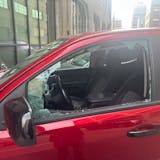Eric Dayton ("A farewell to skyways," April 23) suggests it's time to remove downtown Minneapolis' skyways. Why? Because they're popular, that's why — more popular than sidewalks — leading to some undesirable outcomes.
Dayton's solution is to remove the skyways so as to force pedestrians to walk outdoors. Or, as seems likely, to not walk anywhere, an alternative outcome Dayton doesn't appear to have considered.
Dayton is proposing an intriguing political and economic philosophy: When you can't compete, don't improve your product. Instead, pass laws that forcibly eliminate your competitor.
Allow me to offer a simpler alternative for Mr. Dayton, and for the city of Minneapolis: If you think sidewalk traffic is important, develop and implement strategies that make outdoor pedestrianism more appealing than the skyways.
If you can't come up with anything, apply your creative energy and political capital to fixing the flaws in the environment we have while leaving in place what people demonstrably prefer.
Bob Lewis, Minneapolis
• • •
So ask senior citizens (the fastest-growing segment of the population, by the way), disabled people, and individuals interested in personal safety, convenience and an ideal environment, enjoying the energy and activity of walking the skyways, how we feel about closing skyways. Next, ask the hotel management teams, condo associations, apartment renters — all who advertise "located on/near the skyway system" and see how they feel about it. After that, Eric Dayton, ask if we haven't figured out your personal reasons for suggesting the closings, with your investments in certain properties involved. Give us the names and addresses of the formed advisory committee so we can write letters with our opinions. Last, ask us why we would vote for City Council members who are encouraging the closing of the skyways. Then we will ask which council members support this. Votes are very powerful.
Barbara Nylen, Minneapolis
• • •


